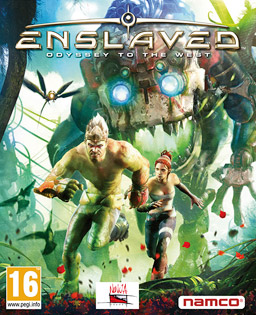Why All Games Shouldn’t Be $60
The gaming industry has faced more change in the last five years than it had the combined 20 years before that. We've seen the rise of downloadable games, indie games and DLC, which expands a game's longevity. We've seen components of games getting locked off for used buyers unless they spend an extra $10. DRM has become more intrusive than ever, and then it kinda-sorta went away. The cost of developing games has skyrocketed, and so too have the marketing budgets. After all, if a game costs millions of dollars to make, you want to be sure it sells millions of copies, right? These are the so-called Triple-A games: games coming out at $60 that the publisher has clearly put a lot of marketing and development muscle behind. In all these changing economic conditions though, one thing hasn't changed too much: most console games still cost $60 at retail, regardless of the amount of cash spent developing or marketing the title. Surely all games aren't created equal, so why the uniform approach to pricing in the retail space, especially compared to the changes the downloadable marketplace has brought with it?

You read about it all the time: game X "only" sold 400,000 copies, and thus it's considered a failure. Recall last year's critically lauded (for the most part)
Enslaved: Odyssey to the West. Here was a game with great production values and Hollywood talent (Andy Serkis) backing it. Released in early October, it had to fend off competition from games like
Halo: Reach, Castlevania: Lords of Shadow, Medal of Honor, Fallout: New Vegas and of course
Call of Duty: Black Ops, all games coming out more or less within a month of its release. All of those games are from established franchises, and all of them did pretty well for themselves. The problem is that launching a new franchise in such a busy time of the year is an immensely difficult task. If you're going to spend $60 on one of those games, are you going to go with a name you know and is (more or less) synonymous with quality or are you going to take a gamble?
Publishers traditionally like to play it safe, making sequels to popular games or making an original game that definitely has a very
familiar vibe to it. Gamers, and people in general, are creatures of habit: we buy the big games with the numbers on the end, because they're probably pretty good, right? So, in hindsight, perhaps Namco Bandai did not make the best choice when releasing Enslaved amidst a torrent of sequels. The first and most obvious answer, would be to release the game in a slower time of the year, say August. This worked well for Square-Enix with Deus Ex: Human Revolution, which strictly speaking isn't a new franchise, but might as well be. Its predecessor is a ten year old game that only came out on PC initially and got a half-hearted PS2 port some time after the fact.
But there is another possible solution:
stop pricing every game the same. As stated earlier, all games aren't created equal. Let's say, for argument's sake, that Enslaved was qualitatively, in the eyes of the consumers at least, on the same level as all the other games. The marketing for it certainly painted it that way: the game looked great, had Hollywood talent behind it, and some of the most impressive performance capture seen to date in a game. As established though, sequels will simply sell better than a new intellectual property (IP) the vast majority of the time. But what if Enslaved had come out at, say, $40? It would create a lower cost barrier to entry and would be more enticing to consumers looking for something new. Suddenly, the gamble isn't quite as risky.
This will not have the desired effect if it's confined to one game, or a small handful of games a year, however. There's a concept known as perceived quality, which goes as follows: if all games are $60 new, and this one is $40 new, surely it must be of lower quality. By creating a uniform approach to pricing, both gamers and publishers have become reluctant to change the status quo. This certainly won't change overnight, with one game release. If this concept were to be applied by multiple publishers though, I think the benefits would be tangible.
There is also something of a self-fulfilling prophecy at work here. Publishers are reticent to put their full marketing muscle behind a new IP, because it's a risky endeavor. Thus, awareness for new IP X is low at release, and lo and behold, it fails to set the charts alight. Publishers go "I told you so!", return to churning out games with known names on the box and it's business as usual, until two years later they decide it's time to take another gamble, and the cycle begins anew.

Of course, the solution probably isn't as simple as I make it sound. For one thing, to sell a lot of copies, games generally need to appeal to broad sensibilities, outliers like Minecraft notwithstanding. Graphics are an important part. After all, looks sell. If a game retails at $40, the development and marketing budgets would have to be adjusted accordingly. Can a game on a smaller budget still compete with the big blockbusters? Some kind of middle ground would have to be found, between marketing to the crowd that is open to a new IP rather than plastering bus ads all over the country. Market to the crowd that's in the know, the people who read game websites and magazines, and if the game is genuinely good, word of mouth and reviews will get out there.
I can think of a few games coming out this Holiday season that probably won't do the numbers they deserve to, and it's a little sad. Games like
Rayman: Origins and last year's criminally underrated
Singularity seemed to be put out to die by their respective publishers, with little to no marketing, released in busy times of the year at a premium price point. Perhaps it wouldn't have to be this way if at least one of those things were to change.

